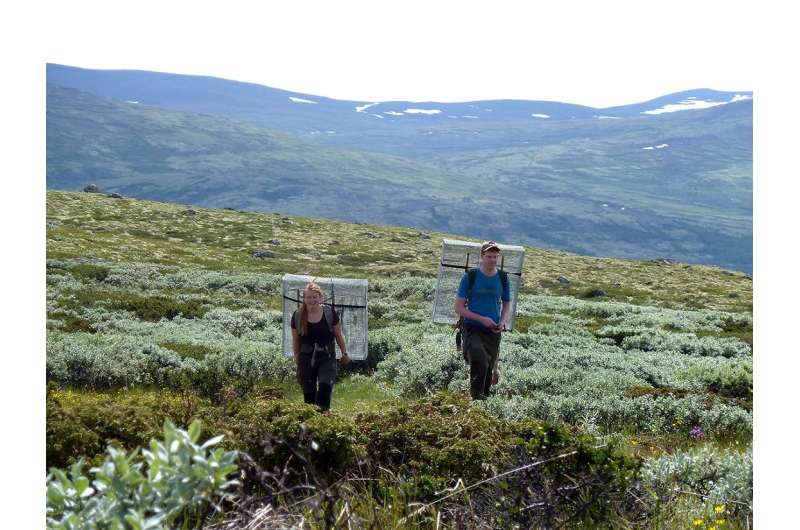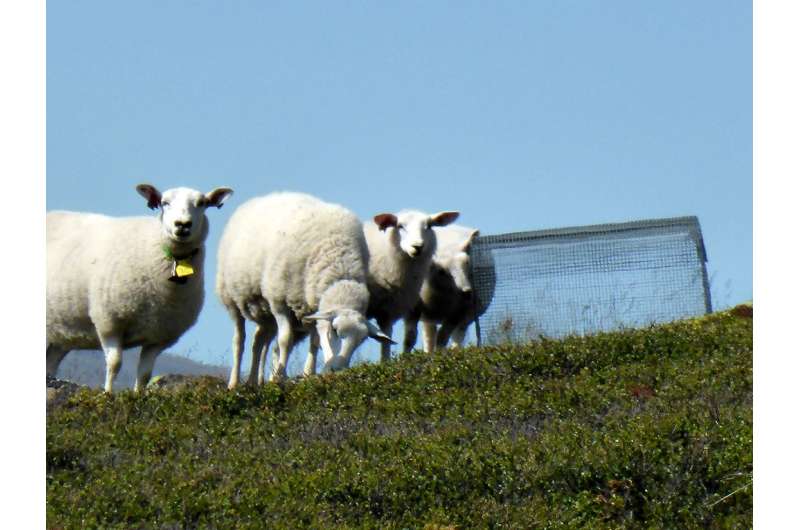How sheep grazing affects the Norwegian mountains

When animals graze, they affect the environment. They keep meadows open, their faeces fertilizes the soil, and forests yield to cultivated landscapes. But what effect does grazing have on overall biomass? Does grazing affect carbon capture, too? How many plants survive and what kind?
A group of researchers at the Norwegian University of Science and Technology (NTNU) decided to find out. "This research can tell us something about carbon sequestration in mountain plants, and how grazers affect it," says Mia Vedel Sørensen in the Department of Biology. She recently earned her doctorate on the topic.
In 2013, the researchers set up 48 wire cages at various locations near Hjerkinn village in the Dovre mountains. These were grazing areas where sheep dominate and have the occasional company of passing moose, lemmings, field mice, ptarmigan and a few reindeer. The researchers placed the cages in a meadow, a heath and a Salix shrub landscape with several different willow species.
The wire cages—or exclosures—were designed to keep out resident herbivores so that the researchers could eventually compare the vegetation inside and outside them. The following year, 2014, the researchers planted willow cuttings (Salix) to simulate shrub expansion.
For the past few decades, shrub vegetation has taken over parts of the mountain where heather and meadows were more common thirty years ago. However, grazing can slow down—and potentially even reverse—this expansion. The researchers had to wait until the summer of 2015 to measure the different effects of their planting and cages. They recently presented their results in BMC Ecology.

So what did they find?
"We only found significant effects of the treatments in the heath community. The biomass there increased where the herbivores were kept out," says Vedel Sørensen.
In other words, they found that on the heath, growth was better inside the protected cages than outside, where the sheep wandered around a lot. They did not see the same effects in the meadow or shrub landscapes. "That surprised us to begin with," she says.
Heath is the least attractive pastureland for the sheep. You would think the animals would have a greater impact on the grassy meadows or the area with the edible shrubs. "But it actually did turn out to make sense," says Sørensen. Perhaps the grazing was better elsewhere, but the sheep still liked being on the heath. This was their favourite place to relax and chew their cud. And where the sheep relax the most, they also defecate the most, which nourishes the plants and increases growth. In addition, the animals have an impact by trampling the vegetation. This gave some of the plants inside the cages a huge advantage and resulted in a greater difference between the protected and unprotected plant growth.
Shrub expansion may have effect
The researchers thus found that planting the shrubs showed no effects on the ecosystem, but that does not mean that the shrub expansion doesn't matter. Shrubs provide more shade, which in turn can affect other plants. "We figure it's premature to judge these effects, and that this area will provide some interesting results later," says Vedel Sørensen. She hopes that either she or others can follow up on these trials in a few years.
In an earlier study, Vedel Sørensen showed that meadows sequester the most carbon and heath the least of the three landscape types investigated.
More information: Mia Vedel Sørensen et al, Experimental herbivore exclusion, shrub introduction, and carbon sequestration in alpine plant communities, BMC Ecology (2018). DOI: 10.1186/s12898-018-0185-9
Journal information: BMC Ecology
Provided by Norwegian University of Science and Technology




















